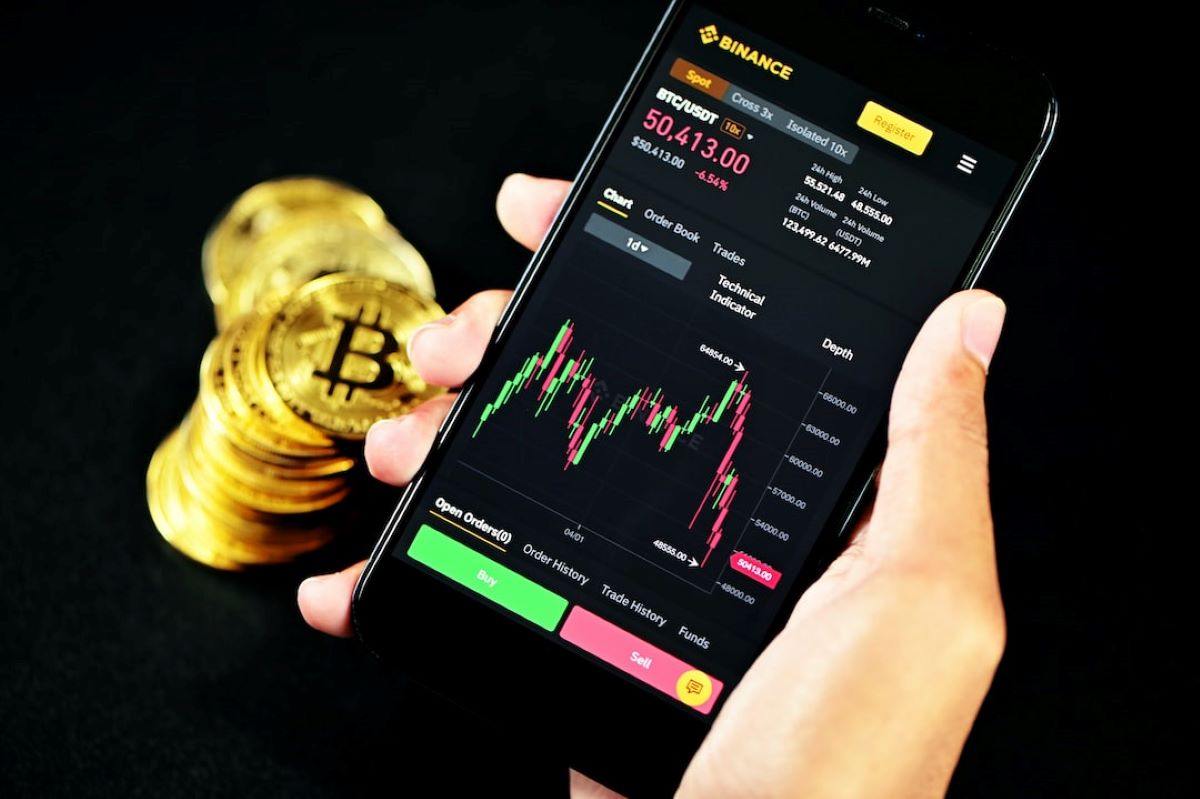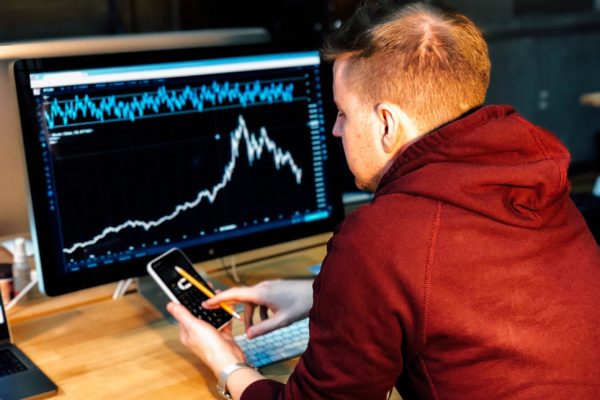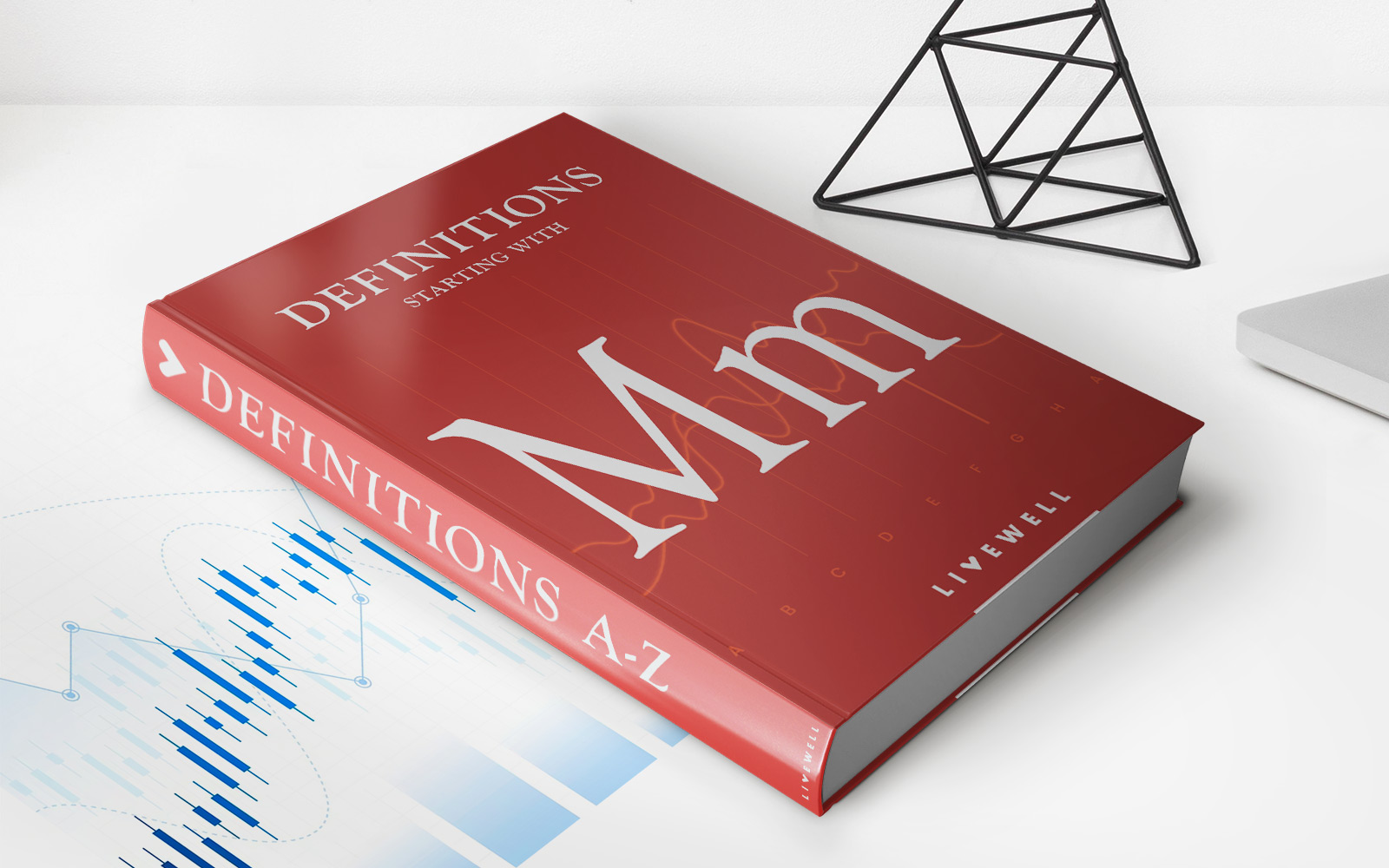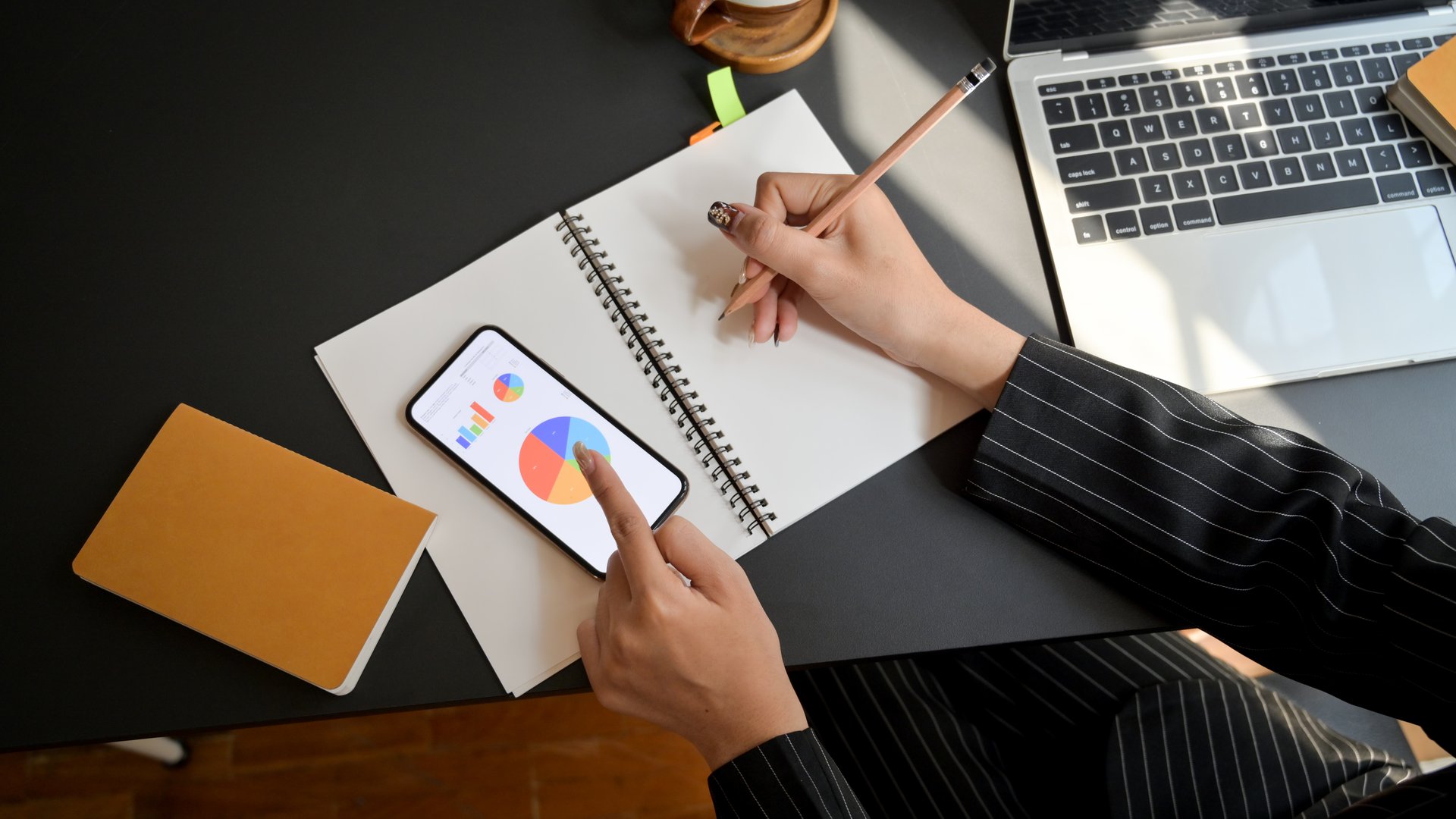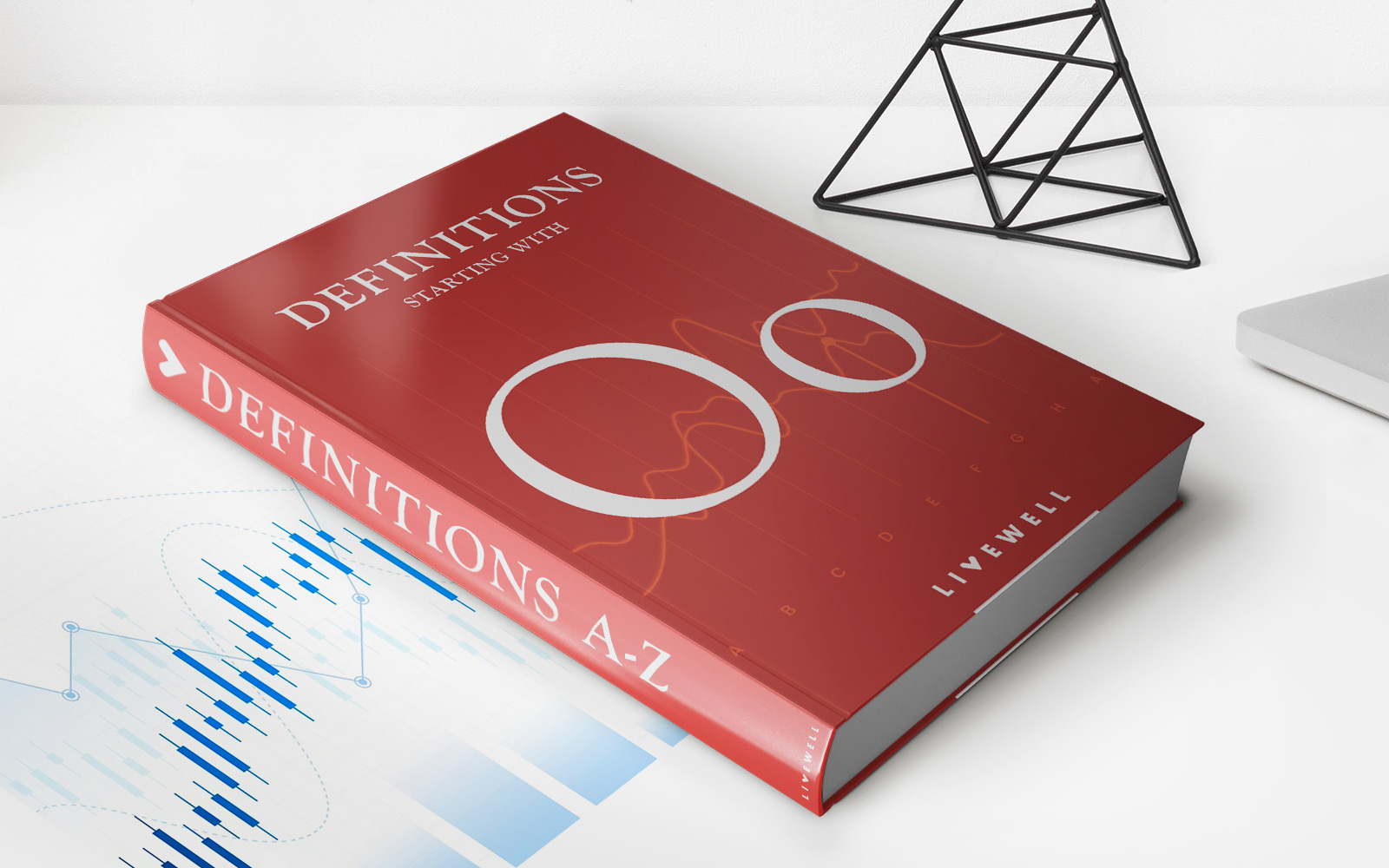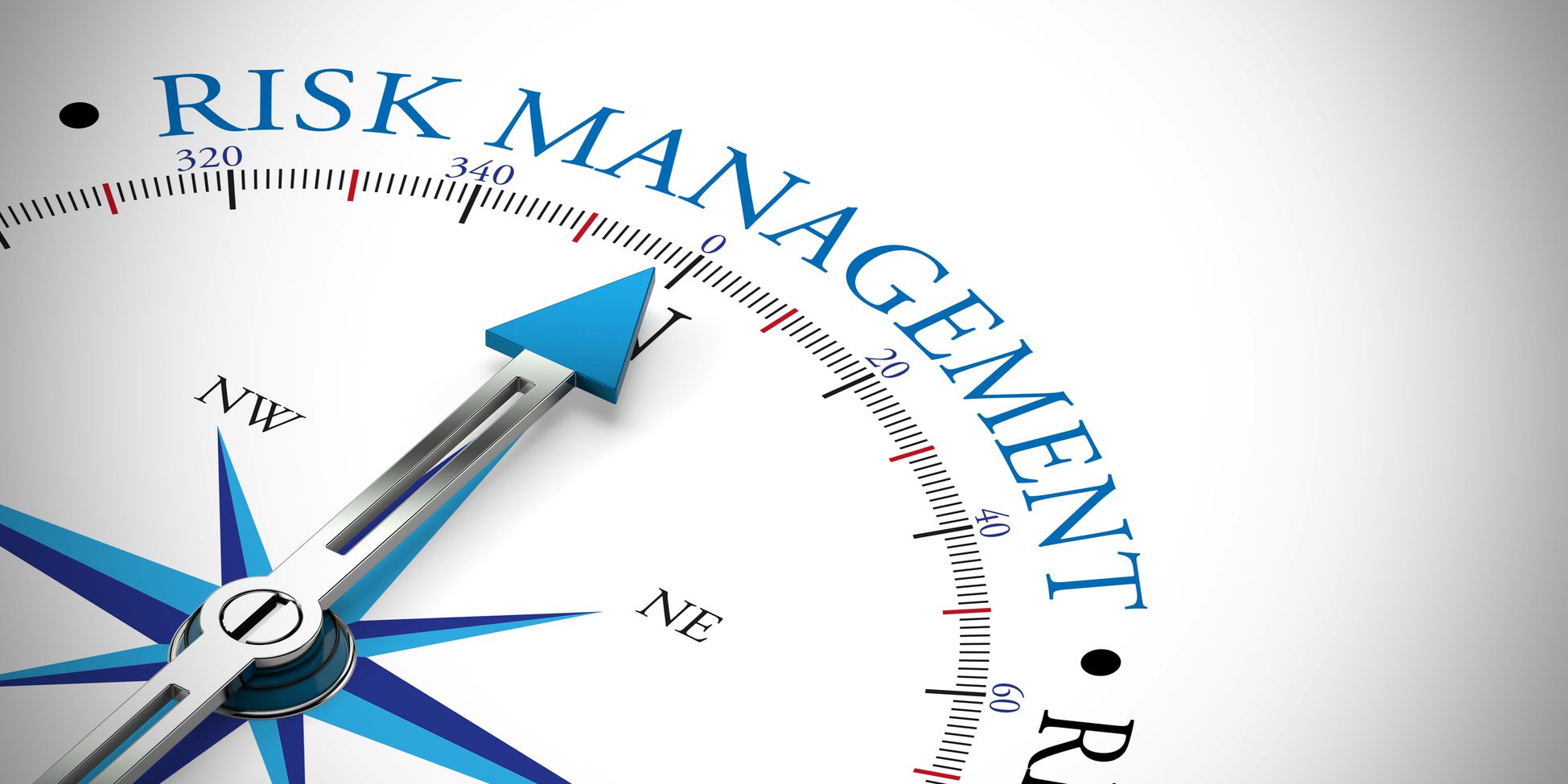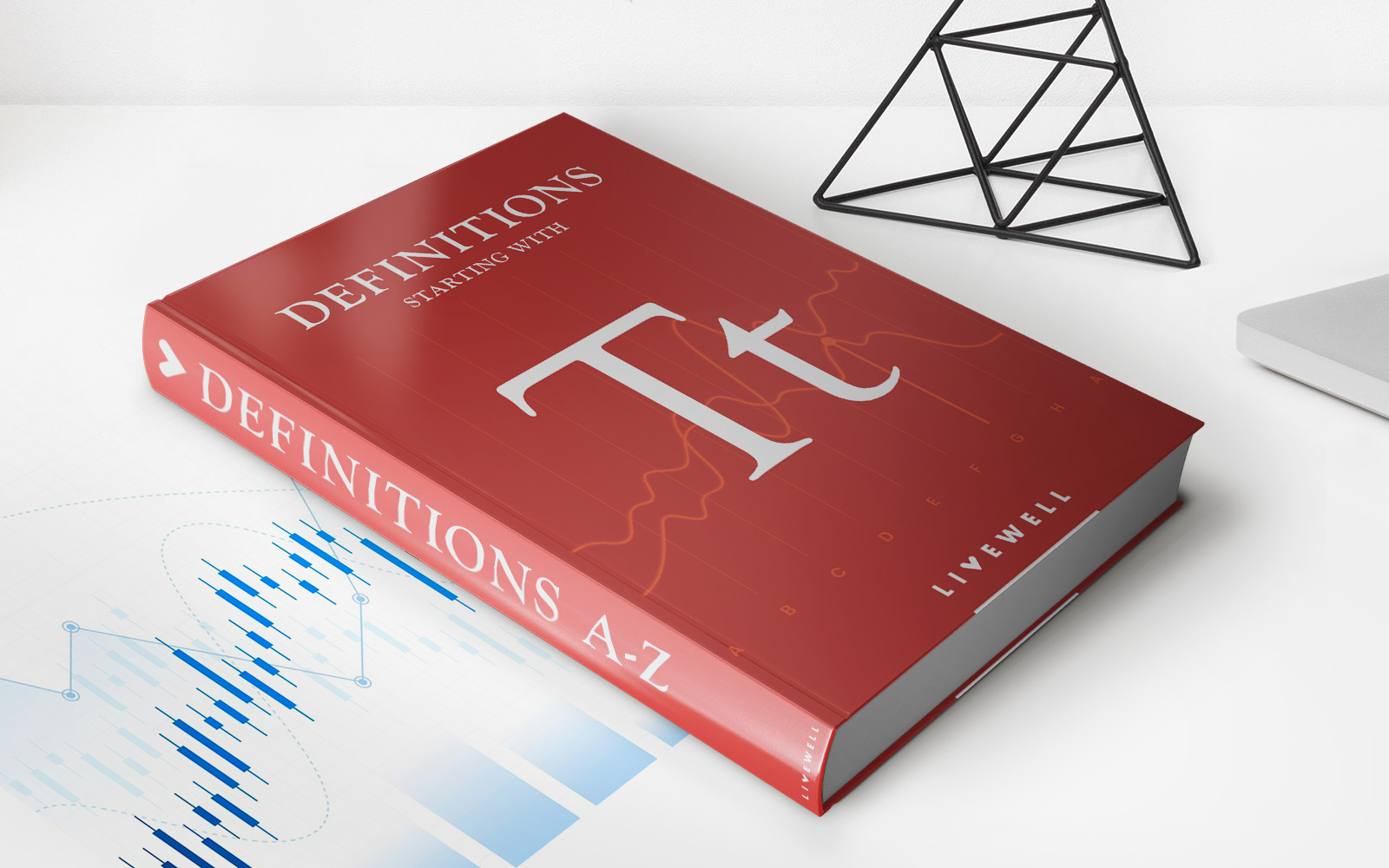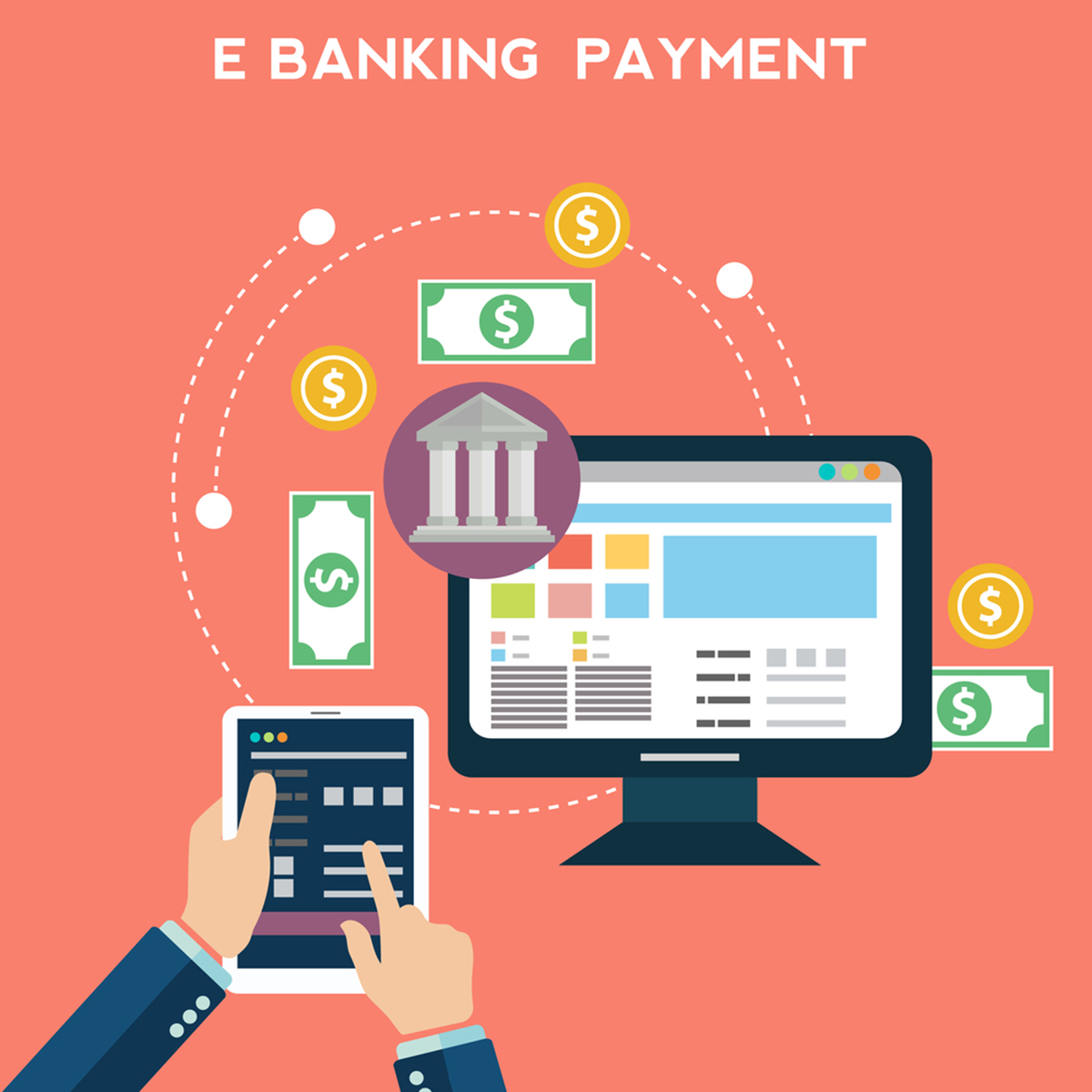

Finance
How To Open An Account In Forex Trading
Published: December 22, 2023
Learn how to open a Forex trading account and start your journey in the world of finance with expert tips and guidance.
(Many of the links in this article redirect to a specific reviewed product. Your purchase of these products through affiliate links helps to generate commission for LiveWell, at no extra cost. Learn more)
Table of Contents
Introduction
Welcome to the world of forex trading! If you are interested in entering the exciting and potentially lucrative world of foreign exchange trading, then opening a trading account is the first step to get started. Forex trading allows individuals to trade currencies and potentially profit from fluctuations in their exchange rates. It is a decentralized market that operates 24 hours a day, five days a week, and offers a wide range of opportunities for traders of all levels.
Before jumping into the process of opening an account, it is important to understand the basics of forex trading. The forex market is the largest and most liquid market in the world, with an average daily trading volume of over $6 trillion. It involves the buying and selling of currencies, with traders speculating on the rise or fall of one currency against another. Traders can engage in various trading strategies, such as scalping, day trading, swing trading, or long-term investing, depending on their risk appetite and trading goals.
However, it’s crucial to note that forex trading comes with its own risks and challenges. Like any form of investment, there is a potential for losses. It requires ample knowledge, practice, and a disciplined approach to achieve success. Therefore, it is essential to thoroughly educate yourself about the forex market, its dynamics, and trading strategies before entering the world of forex trading.
Now that you have a basic understanding of forex trading, let’s dive into the steps involved in opening a forex trading account. Whether you are a beginner or an experienced trader, the process is relatively similar across different forex brokers. In the next sections, we will guide you through the process and provide valuable insights to help you make informed decisions as you embark on your forex trading journey.
Choosing a Forex Broker
Choosing the right forex broker is a crucial step in opening a trading account. With numerous options available in the market, it is essential to conduct thorough research and consider several factors before making a decision.
Here are some key considerations to keep in mind when selecting a forex broker:
- Regulation: Make sure the broker is regulated by a reputable financial authority. This ensures that the broker operates under certain standards and adheres to strict guidelines, providing a safer trading environment for you.
- Trading Platform: Evaluate the trading platform offered by the broker. A user-friendly and feature-rich platform, such as MetaTrader 4 or 5, can greatly enhance your trading experience.
- Trading Costs: Compare the spreads, commissions, and other fees charged by different brokers. Low trading costs can have a significant impact on your profitability in the long run.
- Asset Classes: Consider the range of financial instruments offered by the broker. In addition to major currency pairs, you may want to trade other assets such as commodities, indices, or cryptocurrencies.
- Leverage and Margin: Look into the leverage options provided by the broker. Leverage allows you to amplify your trading positions, but it also increases the risk. Ensure that the broker offers suitable leverage options based on your risk tolerance.
- Customer Support: Check the availability and responsiveness of customer support. Reliable customer support can be crucial when you encounter technical or account-related issues.
- Educational Resources: Assess the educational materials, webinars, and research tools provided by the broker. Access to quality educational resources can help enhance your trading knowledge and skills.
- Reviews and Reputation: Read reviews and testimonials from other traders to gauge the reputation and reliability of the broker. Consider factors such as the broker’s track record, customer satisfaction, and any regulatory actions taken against them.
By carefully considering these factors, you can select a forex broker that aligns with your trading goals and provides a secure and efficient trading environment. Remember, it’s crucial to choose a broker that suits your needs, preferences, and trading style.
Once you have chosen the right forex broker, the next step is to proceed with the account registration process. In the following sections, we will guide you through the steps involved in opening a trading account.
Account Types in Forex Trading
When opening a forex trading account, you will often have the option to choose from different types of accounts offered by the broker. Each account type is designed to cater to different trading needs and experience levels. It’s important to understand the features and requirements of each account type before making a decision.
Here are the most common types of forex trading accounts:
- Standard Account: This is the most basic type of forex trading account. It is suitable for beginners or traders who prefer a simple and straightforward trading experience. Standard accounts typically require a minimum deposit and offer standard trading conditions, including variable spreads, moderate leverage, and no additional perks or benefits.
- Mini Account: Mini accounts are designed for traders who want to start with a smaller initial deposit. These accounts often require a lower minimum deposit compared to standard accounts. While the trading conditions may be similar to a standard account, mini accounts may offer smaller lot sizes, allowing traders to trade in smaller increments.
- Micro Account: Micro accounts are specifically tailored for traders who wish to trade in smaller volumes. These accounts typically have a very low minimum deposit requirement and allow for trading in micro-lots. Micro accounts are ideal for beginners or traders with limited capital who want to practice and gain experience in a live trading environment without risking large sums of money.
- ECN Account: ECN (Electronic Communication Network) accounts provide direct access to the interbank market. These accounts offer competitive spreads, fast execution speeds, and access to deep liquidity. ECN accounts are suitable for experienced traders who prefer tight spreads and want to trade in large volumes.
- Islamic Account: Islamic accounts, also known as swap-free accounts, are designed to comply with Islamic Sharia law, which prohibits any form of interest or usury. Islamic accounts are free from overnight swap charges, making them suitable for traders who follow Islamic principles.
- Managed Account: Managed accounts are operated by professional fund managers on behalf of investors. In a managed account, the investor’s funds are managed by experienced traders who trade on their behalf for a fee or a share of the profits. Managed accounts are suitable for investors who prefer a hands-off approach and want to benefit from the expertise of professional traders.
It is essential to carefully consider your trading goals, risk tolerance, and available capital when choosing an account type. Additionally, some brokers may offer additional account tiers or VIP accounts with extra features and benefits for high-volume or experienced traders.
Now that you have a better understanding of the different account types in forex trading, you can select the one that best suits your needs and allows you to trade comfortably and effectively. In the next section, we will guide you through the registration process to open a forex trading account.
Registration Process
Once you have chosen the forex broker and account type that suits your trading needs, the next step is to proceed with the registration process. This process typically involves providing your personal information and completing the necessary documentation. Here is a step-by-step guide on how to register for a forex trading account:
- Visit the Broker’s Website: Go to the official website of the chosen forex broker. Look for the “Open an Account” or “Register” button, which is usually prominently displayed on their homepage.
- Choose the Account Type: Select the account type that you have decided on during your research and assessment.
- Fill in Personal Information: Provide your personal details, including your full name, date of birth, address, phone number, and email address. It’s important to provide accurate information as it will be used for verification purposes.
- Set Login Credentials: Create a username and password for your trading account. Choose a strong password that includes a combination of letters, numbers, and symbols to ensure the security of your account.
- Read and Agree to the Terms and Conditions: Carefully read through the broker’s terms and conditions, as well as any other legal agreements, and click on the checkbox to indicate your acceptance.
- Complete Verification Process: Depending on the broker’s requirements, you may need to provide additional documentation to verify your identity. This can include a copy of your identification document (such as a passport or driver’s license) and proof of address (such as a utility bill or bank statement). These documents can usually be uploaded directly on the broker’s website.
- Submit the Registration Form: After providing all the necessary information and completing the verification process, submit the registration form.
Once you have successfully completed the registration process, you will receive a confirmation email from the broker with your account details. Some brokers may also require you to activate your account by clicking on a verification link provided in the email.
It’s important to note that the registration process may vary slightly from one broker to another. Some brokers may also have additional steps or requirements. Make sure to follow the instructions provided by the broker and reach out to their customer support if you have any questions or need assistance during the registration process.
With your forex trading account registered and verified, you are now one step closer to entering the exciting world of forex trading. The next sections will guide you through the process of identity verification and funding your trading account.
Identity Verification
Identity verification is a crucial step in the account opening process, as it ensures that the forex broker complies with regulatory requirements and helps prevent fraudulent activities. The broker will typically request certain documents to verify your identity. Here are the common steps involved in the identity verification process:
- Proof of Identification: The broker will require a valid government-issued identification document, such as a passport, driver’s license, or national ID card. Make sure the document is not expired and the information is clear and readable.
- Proof of Address: To verify your address, the broker may ask for a recent utility bill, bank statement, or any other official document that clearly shows your name and residential address. The document should be dated within the last three to six months.
- Upload Documents: Most brokers provide an online portal or interface where you can securely upload the required documents. Follow the instructions provided by the broker to upload the necessary files in a supported format (PDF, JPEG, etc.).
- Verification Process: Once you have uploaded the documents, the broker’s compliance team will review them for verification. This process may take a few hours to several business days, depending on the broker’s internal procedures.
- Additional Documents: In some cases, the broker may request additional documents or information to complete the verification process. This can include a bank statement, proof of source of funds, or a completed customer questionnaire.
- Notification of Verification: Once your identity verification is complete, the broker will notify you via email or through their online portal. This notification will confirm that your account has been successfully verified and is now ready for use.
It’s important to note that the documentation requirements and the verification process may vary from broker to broker. Some brokers may have specific guidelines regarding the size, resolution, or format of the documents. Ensure that you carefully follow their instructions to ensure a smooth verification process.
Identity verification is an essential part of ensuring the security and integrity of the forex trading environment. It helps protect both the broker and the traders from potential fraudulent activities, such as identity theft or money laundering.
Now that you have successfully completed the identity verification process, you are one step closer to trading in the forex market. The next section will guide you through the process of funding your trading account.
Funding Your Account
Once your forex trading account is opened and verified, the next step is to fund your account. Funding your account allows you to deposit the necessary capital to start trading in the forex market. Here are the common methods for funding your forex trading account:
- Bank Wire Transfer: One of the most popular and widely accepted methods of funding your forex account is through bank wire transfer. You can initiate a transfer from your bank account to the broker’s designated bank account. It may take a few business days for the funds to be credited to your trading account, depending on the bank and the location.
- Debit/Credit Cards: Many brokers accept debit and credit card payments for funding your trading account. You can use your Visa, Mastercard, or other major credit cards to make an instant deposit. This method offers convenience and speed, allowing you to start trading quickly.
- E-Wallets: E-wallets, such as PayPal, Skrill, and Neteller, have become increasingly popular as a funding method for forex trading accounts. These platforms provide a secure and convenient way to transfer funds from your e-wallet account to your trading account.
- Online Payment Systems: Some brokers offer the option to fund your account using online payment systems like WebMoney, Qiwi, or Perfect Money. These systems allow for fast and easy transfers, particularly for traders in regions where traditional banking methods may be limited.
- Cryptocurrency: With the proliferation of cryptocurrencies, some brokers now accept popular digital currencies like Bitcoin or Ethereum for depositing funds. This method offers fast and secure transactions, with the added benefit of anonymity and decentralization.
It’s important to note that each broker may have specific deposit requirements, including minimum deposit amounts and any applicable fees for funding your account. Take the time to review the broker’s deposit options and choose the method that suits your preferences in terms of security, speed, and convenience.
Additionally, it’s crucial to allocate funds that you can afford to risk in your trading account. Forex trading involves potential losses, and it’s essential to only deposit funds that you are willing to put at risk. This will help you manage your risk effectively and maintain a disciplined approach to trading.
Once you have successfully funded your trading account, the deposited funds will be reflected in your trading platform, and you can start trading in the forex market. It’s important to utilize sound risk management strategies and gradually build your trading skills and experience over time.
In the next section, we will discuss the process of installing the popular MetaTrader 4 platform, a widely used trading platform in the forex industry.
MetaTrader 4 Platform Installation
The MetaTrader 4 (MT4) platform is one of the most popular and widely used trading platforms in the forex industry. It offers a user-friendly interface, advanced charting capabilities, and a wide range of built-in indicators and trading tools. Installing the MT4 platform is a straightforward process. Here’s how you can install the MetaTrader 4 platform on your computer:
- Download the MT4 Installation Package: Visit the website of your chosen forex broker and look for the download link for the MetaTrader 4 platform. Most brokers provide a link to download the platform directly from their website.
- Select the Version: Choose the appropriate version of MetaTrader 4 based on your operating system. The platform is available for Windows, Mac, and Linux.
- Run the Installation File: After downloading the installation package, locate the file on your computer and run it. You may need to grant permission for the installation to proceed.
- Read and Accept the License Agreement: During the installation process, you will be presented with the MetaTrader 4 license agreement. Read through the agreement and click on the checkbox to indicate your acceptance. Then click “Next” to proceed.
- Choose the Installation Folder: Select the destination folder where you want to install the MetaTrader 4 platform. You can choose the default folder or specify a different location if desired. Click “Next” to continue.
- Select Additional Components: In this step, you can choose to install additional components, such as additional languages or custom indicators. You can also choose to install shortcuts on your desktop or start menu. Select your desired options and click “Next”.
- Start Installation: After confirming your choices, click on the “Install” button to begin the installation process. Wait for the installation to complete.
- Launch the MetaTrader 4 Platform: Once the installation is finished, you can launch the MetaTrader 4 platform. Look for the desktop icon or navigate to the installation folder to find the MetaTrader 4 executable file.
- Login to Your Trading Account: When you open the MetaTrader 4 platform, you will be prompted to enter your login credentials. Enter your account number, password, and the broker’s server information provided to you in the account confirmation email.
- Start Trading: Once you have logged in successfully, the MetaTrader 4 platform will load, and you can start trading in the forex market. Familiarize yourself with the platform’s features, charts, and trading instruments.
It’s important to note that if you encounter any issues during the installation process or have difficulty logging in, you can reach out to your broker’s customer support team for assistance. They will be able to guide you through any troubleshooting steps or provide you with the necessary information to resolve any technical issues.
With the MetaTrader 4 platform installed and ready to use, you can now explore the various trading tools and features it offers to enhance your forex trading experience. In the next section, we will discuss the importance of opening a demo account before trading with real money.
Opening a Demo Account
Before diving into live trading with real money, it is highly recommended to open a demo account. A demo account allows you to practice trading in a risk-free environment using virtual funds. Here are the key reasons why opening a demo account is essential:
Practice and Gain Experience
A demo account provides you with the opportunity to practice and familiarize yourself with the trading platform, its features, and the various tools available. You can experiment with different trading strategies, test indicators, and practice executing trades. This hands-on experience is invaluable in building your confidence and refining your trading skills without the risk of losing real money.
Test Trading Strategies
A demo account allows you to test and evaluate different trading strategies in real market conditions. You can assess the effectiveness of your strategies, identify areas for improvement, and make adjustments without the fear of incurring losses. This helps you develop a reliable trading strategy that suits your risk tolerance and trading goals.
Understand Market Dynamics
Trading in a demo account provides you with a simulated experience of real market conditions. You can observe how prices move, analyze market trends, and understand the impact of various factors on currency pairs. This knowledge is essential for making informed trading decisions and developing a deeper understanding of the forex market.
Test Risk Management Techniques
A demo account allows you to practice implementing risk management techniques, such as setting stop-loss and take-profit levels, managing position sizes, and utilizing risk-reward ratios. This helps you develop discipline and a structured approach to managing your trades, thus minimizing potential losses and preserving your account balance.
Compare Broker Offerings
A demo account also provides an opportunity to compare different brokers and their trading offerings. You can assess the quality of their execution, the speed of order processing, and the reliability of their platform. This allows you to find a broker that best suits your trading needs and preferences before committing real funds.
To open a demo account, simply follow these steps:
- Visit your chosen broker’s website.
- Look for the option to open a demo account or start a free trial.
- Fill in the required information, such as your name and email address.
- Choose a trading platform (e.g., MetaTrader 4) and select the account type (demo account).
- Submit the registration form, and you will receive an email with your demo account login details.
- Download the trading platform if necessary and log in to your demo account.
- Start trading with virtual funds and explore the features and functionality of the platform.
It’s important to treat your demo account as a learning tool and approach it with the same seriousness and discipline as you would with a live trading account. Practice and experiment with different strategies and techniques, and track your progress over time.
Once you feel comfortable and confident with your trading skills, you can move on to the next step of opening a live trading account and starting your forex trading journey with real funds.
Opening a Live Account
After gaining sufficient experience and confidence from practicing with a demo account, you may decide to open a live trading account to start trading with real money. Opening a live account involves a few additional steps compared to a demo account. Here’s a guide on how to open a live trading account:
- Choose the Forex Broker: Select a reputable and regulated forex broker that aligns with your trading needs and preferences. Consider factors such as trading platform, account types, spreads, customer support, and regulatory compliance.
- Visit the Broker’s Website: Go to the website of the selected broker and look for the “Open Account,” “Register,” or similar button to initiate the account opening process.
- Select the Account Type: Choose the specific account type that best suits your trading goals and risk tolerance. Common options include standard accounts, mini accounts, or ECN accounts. Make sure to review the account requirements and features.
- Fill in the Registration Form: Provide accurate and complete personal information as requested in the registration form. This typically includes your full name, contact details, and residency information.
- Agree to Terms and Conditions: Carefully read through the broker’s terms and conditions, privacy policy, and any other legal agreements. Check the box to indicate your acceptance and commitment to abide by the set rules and regulations.
- Submit Identification Documents: As part of the verification process, you will need to provide identification documents to comply with Know Your Customer (KYC) requirements. This typically includes a valid government-issued identification document (passport, driver’s license) and proof of address (utility bill, bank statement).
- Verify Your Email and Contact Information: The broker may require you to verify your email address and contact details. This is usually done by clicking on a verification link sent to your email or entering a verification code provided via SMS.
- Fund Your Account: Once your account has been approved and verified by the broker, you can proceed to fund your account with real money. The available funding methods may include bank wire transfers, credit/debit cards, e-wallets, or other online payment systems.
- Set Trading Preferences: Depending on the broker, you may have the option to customize certain trading preferences, such as leverage levels, base currency, or account settings. Review and set these preferences according to your trading strategy and risk appetite.
- Login and Start Trading: After successfully funding your account, you will receive the login credentials. Use these credentials to log in to your trading platform and start trading in the forex market with real money.
It’s crucial to note that opening a live trading account involves real financial risk, and it’s essential to approach trading with a disciplined mindset and proper risk management strategies. Start with a smaller initial deposit and gradually increase your position sizes as you gain more experience and confidence.
It is also recommended to continue learning and expanding your knowledge about forex trading to enhance your trading skills. Stay informed about market trends, economic news, and trading strategies to make informed decisions and adapt to changing market conditions.
Remember to reach out to the broker’s customer support if you have any questions or need assistance during the account opening process. They can guide you through any specific requirements or offer support as needed.
Congratulations! With your live trading account opened and funded, you are ready to embark on your forex trading journey. Continuously evaluate your trading performance, learn from your successes and failures, and keep refining your trading strategy to strive for consistent profitability.
Conclusion
In conclusion, opening an account in forex trading is the vital first step to participate in the dynamic world of currency trading. By following the necessary steps and considering key factors such as choosing a reputable broker, selecting the appropriate account type, and completing the registration and verification process, you can start your forex trading journey with confidence. Opening a demo account is highly recommended to practice and gain experience, test trading strategies, and understand market dynamics before venturing into live trading with real money.
Remember to allocate funds that you can afford to risk and always employ sound risk management techniques to protect your trading capital. Pay attention to the broker’s offerings, platform features, trading costs, and customer support to ensure a positive trading experience.
The installation of the MetaTrader 4 platform provides you with a powerful tool to execute your trades effectively and access a wide range of trading tools and indicators. Additionally, opening a demo account allows you to hone your trading skills and gain confidence before transitioning to live trading.
Once ready, opening a live account enables you to trade with real money. However, it’s important to approach live trading with discipline, patience, and continuous learning. Regularly assess your trading performance, adjust your strategies as needed, and stay informed about market trends and news events that may impact currency markets.
Remember, forex trading involves inherent risks, and it’s crucial to only trade with funds you can afford to lose. Consider seeking guidance from experienced traders, educating yourself through reputable sources, and staying updated with the latest market developments.
With the right knowledge, skills, and mindset, forex trading can offer exciting opportunities for financial growth and independence. Embrace the challenges, be persistent in your learning, and continuously improve your trading abilities. Best of luck on your forex trading journey!
